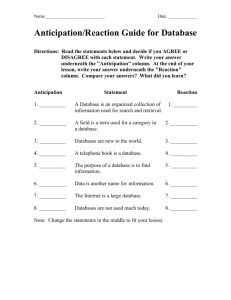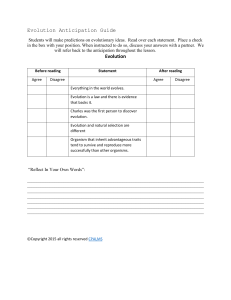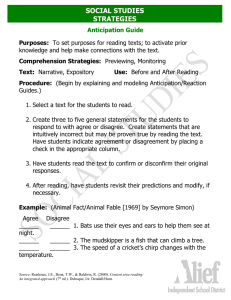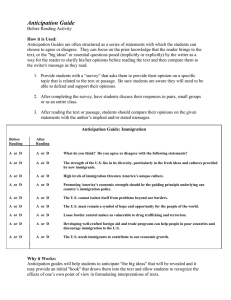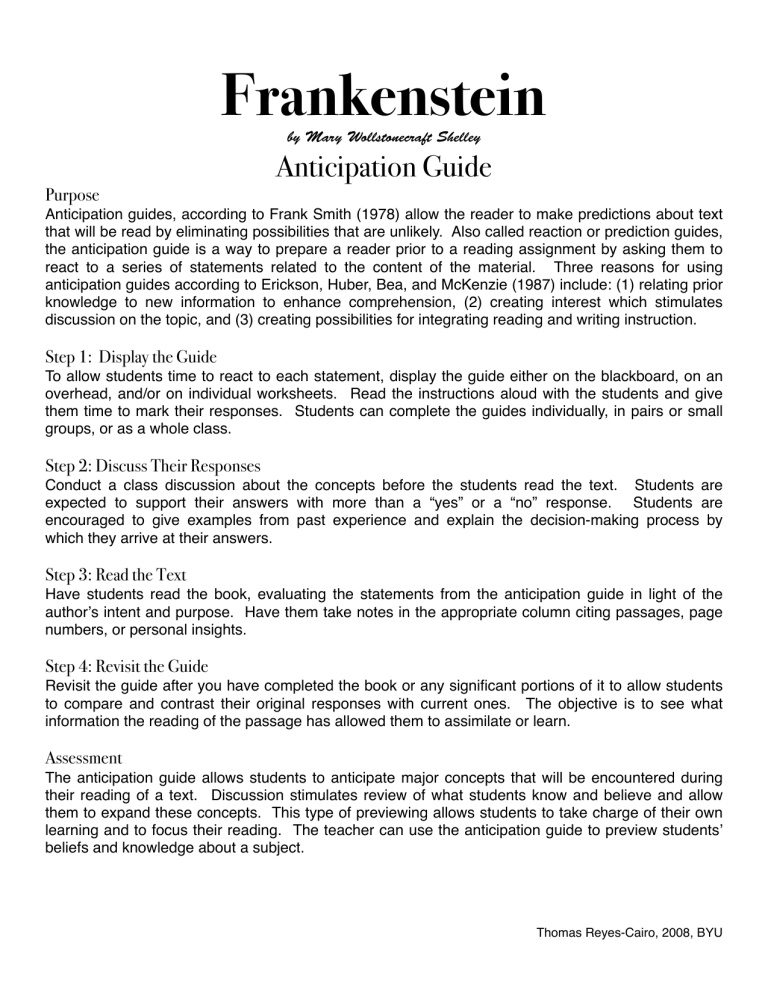
Frankenstein by Mary Wollstonecraft Shelley Purpose Anticipation Guide Anticipation guides, according to Frank Smith (1978) allow the reader to make predictions about text that will be read by eliminating possibilities that are unlikely. Also called reaction or prediction guides, the anticipation guide is a way to prepare a reader prior to a reading assignment by asking them to react to a series of statements related to the content of the material. Three reasons for using anticipation guides according to Erickson, Huber, Bea, and McKenzie (1987) include: (1) relating prior knowledge to new information to enhance comprehension, (2) creating interest which stimulates discussion on the topic, and (3) creating possibilities for integrating reading and writing instruction. Step 1: Display the Guide To allow students time to react to each statement, display the guide either on the blackboard, on an overhead, and/or on individual worksheets. Read the instructions aloud with the students and give them time to mark their responses. Students can complete the guides individually, in pairs or small groups, or as a whole class. Step 2: Discuss Their Responses Conduct a class discussion about the concepts before the students read the text. Students are expected to support their answers with more than a “yes” or a “no” response. Students are encouraged to give examples from past experience and explain the decision-making process by which they arrive at their answers. Step 3: Read the Text Have students read the book, evaluating the statements from the anticipation guide in light of the authorʼs intent and purpose. Have them take notes in the appropriate column citing passages, page numbers, or personal insights. Step 4: Revisit the Guide Revisit the guide after you have completed the book or any significant portions of it to allow students to compare and contrast their original responses with current ones. The objective is to see what information the reading of the passage has allowed them to assimilate or learn. Assessment The anticipation guide allows students to anticipate major concepts that will be encountered during their reading of a text. Discussion stimulates review of what students know and believe and allow them to expand these concepts. This type of previewing allows students to take charge of their own learning and to focus their reading. The teacher can use the anticipation guide to preview studentsʼ beliefs and knowledge about a subject. Thomas Reyes-Cairo, 2008, BYU Name: _______________________________________________________ Date: ___ / ___ / ___ Instructions: Take what you know about “Frankenstein” and think about the statements below. Place a checkmark in the you column next to statements that you agree with. Next, place a checkmark in the author column next to statements that you predict the author will support in the text. Take notes as you read “Frankenstein” that support either your argument or the authorʼs argument (which may be different than what you originally predicted). Statements You Author Notes Everyone has a hidden monster inside of them. [hidden: not easy to find] Isolating ourselves will magnify our problems rather than resolve them. [isolate: keep separate or apart] Parents/Guardians have a never-ending responsibility for their children. [never-ending: constant, lasting] Fame and glory are worth seeking. [seek: search for something] Science is better than Nature. [nature: natural world] Some secrets are worth hiding. [hide: keep secret/not shown] What we choose to do will have an effect on others. [effect: result, consequence] Edited from Thomas Reyes-Cairo, 2008, BYU
